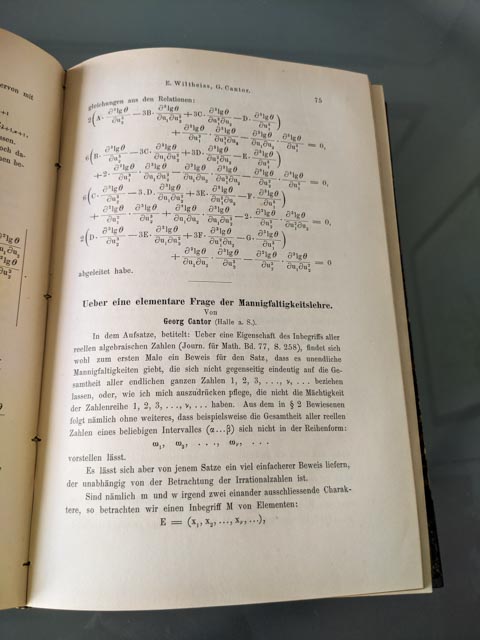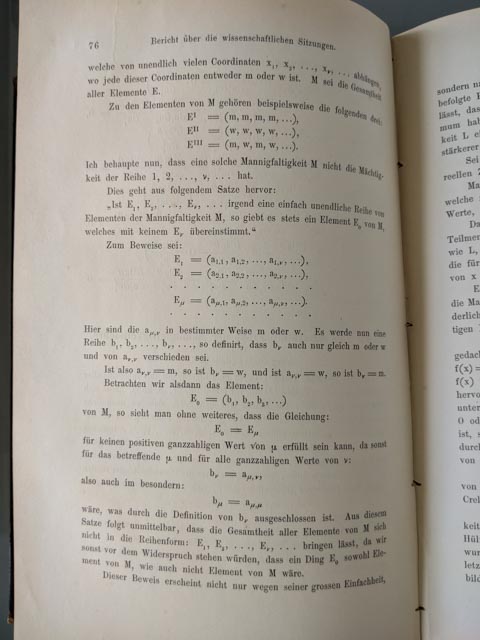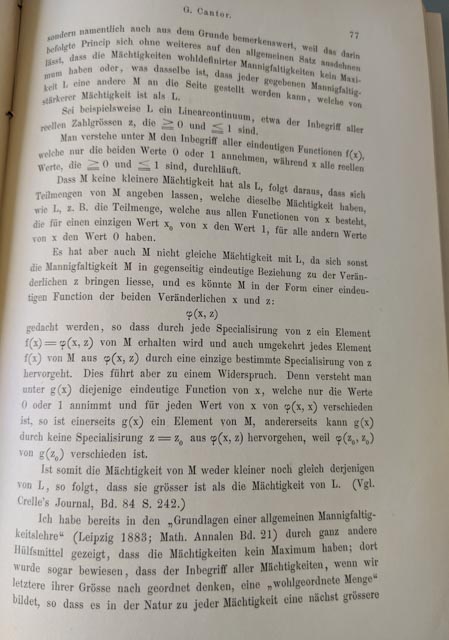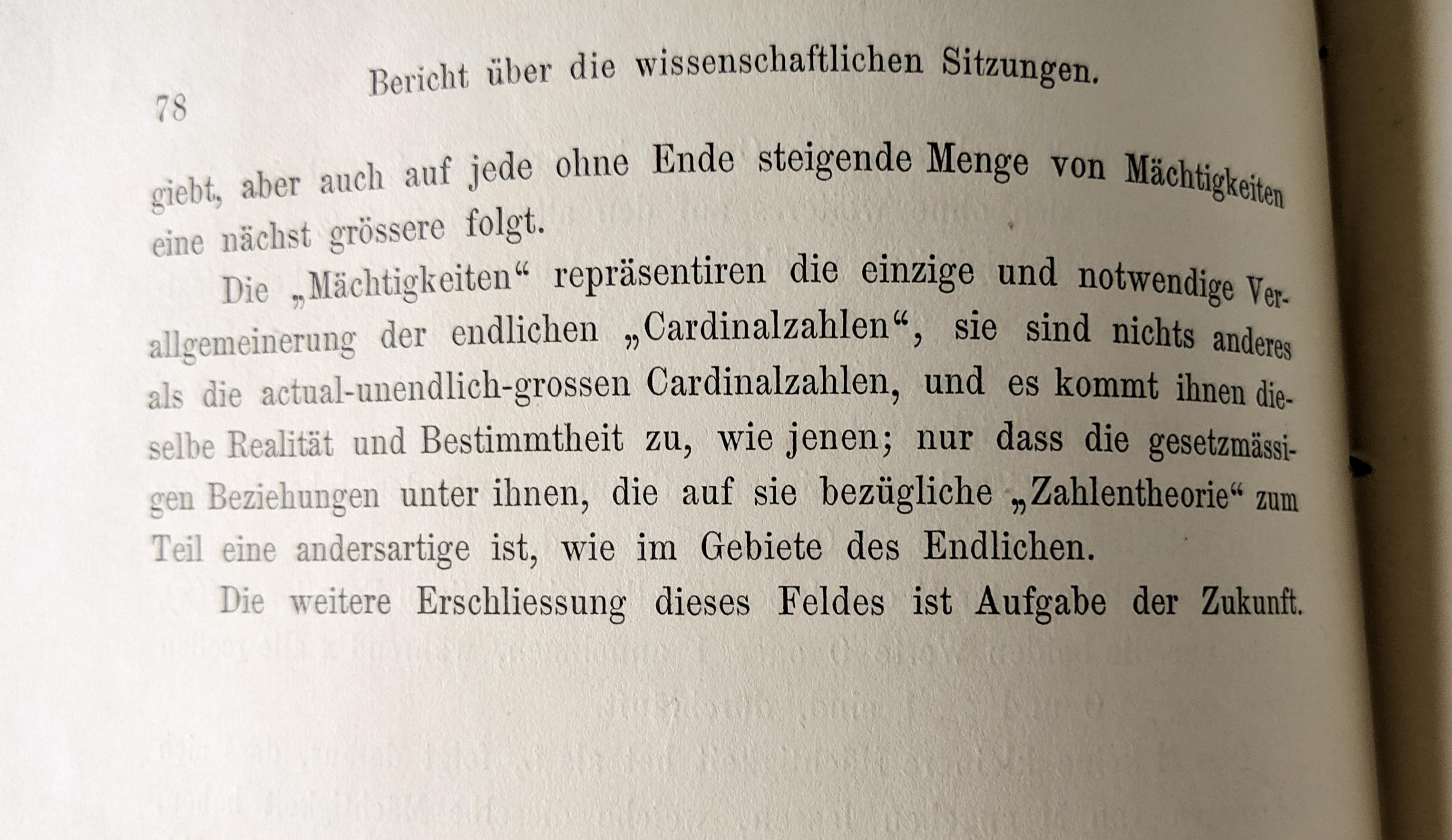In preparing to cover Cantor’s proof of different infinite set cardinalities (one of my all-time favorite topics!) in our theory of computation course, I found various conflicting accounts of what Cantor originally proved. So, I figured it would be easy to search the web to find the original proof.
Shockingly, at least as far as I could find1, it didn’t exist on the web! The closest I could find was in Google Books the 1892 volume of the Jähresbericht Deutsche Mathematiker-Vereinigung (which many of the references pointed to), but in fact not the first value of that journal which contains the actual proof.
Normally, of course, when something doesn’t turn up in DuckDuckGo searches, that means it doesn’t exist, but for a document this old, I figured it was worth actually visiting a library. (Okay, nothing quite so radical as going to a physical library! By visit, I mean, going to the website for the university library and searching there.)
So, I tried submitting the form our library has, requesting Uber eine elementare Frage der Mannigfaltigkeits-lehre by G. Cantor from the 1891 journal. I didn’t notice the scan request until after submitting, so I tried again, checking the box to request a PDF scan.
I was delighted a few days later to receive this email:

And, indeed the link went to a scan of Cantor’s original proof (PDF):
The really cool thing is about two days later I happened to wander into the printer room, and saw a strange object in my mailbox with a nice musty smell.
Apparently, the original request I’d submitted to the library had gone through, and I found myself starting at an 1891 edition of a German math journal!

And on pages 75-78, Cantor’s original published proof!





I don’t read German, but the last line is well worth translating:

From now on, whenever its hard to come up with a good conclusion to a paper, this one always works.
I believe our library’s policy is that (at least for faculty) when you check out a book you can keep it until the next person requests it. So, I’ll be holding on to this one until then. When prospective high school students visit UVA, they often ask to see all the cool cutting edge technology we use in our research. I’ll be happy to show them three of the coolest things I have in my office: an abacus, an Apple II, and now, an 1891 math journal.
- Apparently I wasn’t very good at searching then. In writing this post, I tried a new search and found a great post with both the original German and an English translation: Cantor’s Original 1891 Diagonal proof by James Meyer.